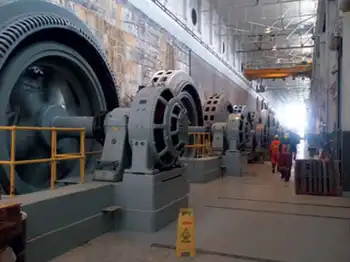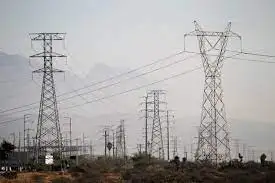Farmer turns to the sun to run Indiana operation
By The Tribune-Star
NFPA 70e Training - Arc Flash
Our customized live online or in‑person group training can be delivered to your staff at your location.

- Live Online
- 6 hours Instructor-led
- Group Training Available
The 66- by 28-foot roof supports 60 photovoltaic solar panels, each producing 224 watts of electricity. The panels are aligned in four rows, or two sub-arrays, with each sub-array producing 6.7 kilowatts, making the entire system produce 13.4 kilowatts of electricity, said Phillip Roberts, owner of One Planet Solar & Wind, a Terre Haute solar and wind distributing and contracting company that recently installed the system.
"It's the fourth-largest residential solar photovoltaic system in Indiana," Roberts said, adding that the largest is in northwest Indiana, generating about 20 kilowatts.
It is the first step in making the Loveall farm energy-independent. The farm in southern Vigo County has at least 200 acres of electric fencing to contain a herd of "beefalo," a cross between buffalos and domestic cattle, plus a 7,000-square-foot home.
The fencing itself uses 600 volts of power, Roberts said.
"The system will cover at least 50 percent of electrical usage costs. When working at full power and demand is low, the Lovealls' electric meter will actually turn backward" and the couple will receive credit on their account, Roberts said.
Harold Loveall has been interested in solar technology since the 1970s, and the family has used solar panels for their hot water since the 1980s. Since then, the panels have become less expensive and more efficient, he said.
The solar panels produce direct current (DC) power, which is then transmitted to two inverter panels, which invert that to alternating current (AC) power, for use in the house, Roberts said.
The panels have no moving parts, and the only maintenance is washing the panels about twice a year, Roberts said, to remove any pollen or bird waste.
The system locks in energy prices and will generate savings of $230,000 over the next 25 years at current energy prices, which is about 11.6 cents per kilowatt hour, Roberts said.
Those electricity prices are expected to double, Roberts said, if a federal cap-and-trade energy plan is adopted by Congress. Duke Energy Corp. estimates placing a price on carbon emissions would increase electricity rates in Indiana by 40 percent.
The cap-and-trade system is aimed at reducing U.S. emissions of carbon dioxide and other greenhouse gases by roughly 80 percent from 2005 levels by 2050.
The Lovealls' system will avoid the release of 48,240 pounds of carbon dioxide into the atmosphere, according to One Planet Solar & Wind.
Installation is based on a cost of $7.68 per watt. The Loveall system cost nearly $104,000.
"This is a solar system on steroids," Roberts said.
The average home solar project costs $30,000 to $40,000, based on a 1,500- to 2,000-kilowatt consumption for a 2,000-square-foot home for a family of four. Those systems will cover 50 percent to 80 percent of a homeowner's electrical usage costs, Roberts said.
Those costs are before federal subsidies — a 30-percent federal tax credit for residential homes and a check for 30 percent of the project cost paid directly to companies, Roberts said. In addition, the solar system is property tax-exempt, he said.
The solar panels are part of a "phase one" project, Roberts said. A second phase for the Loveall farm will add more solar panels, plus move an existing 66-foot wind turbine next to the barn to produce wind power to allow the farm to be 100 percent energy independent. The farm would remain connected to Win Energy's power grid as a backup.
"I think this is the future," Loveall said. "My own belief is that fossil fuels are finite, solar energy is infinite."
The farmhouse itself has four solar attic fans and a geothermal system to heat water, plus uses passive solar energy from south-facing windows, Roberts said.
As to long- and short-term benefits, "first, we are lowering our carbon footprint, a sacrifice that will hopefully benefit our grandchildren and their children. Second, we expect the cost of energy to only increase over the next several years. We look at this as means to control some of that cost," Loveall said.











